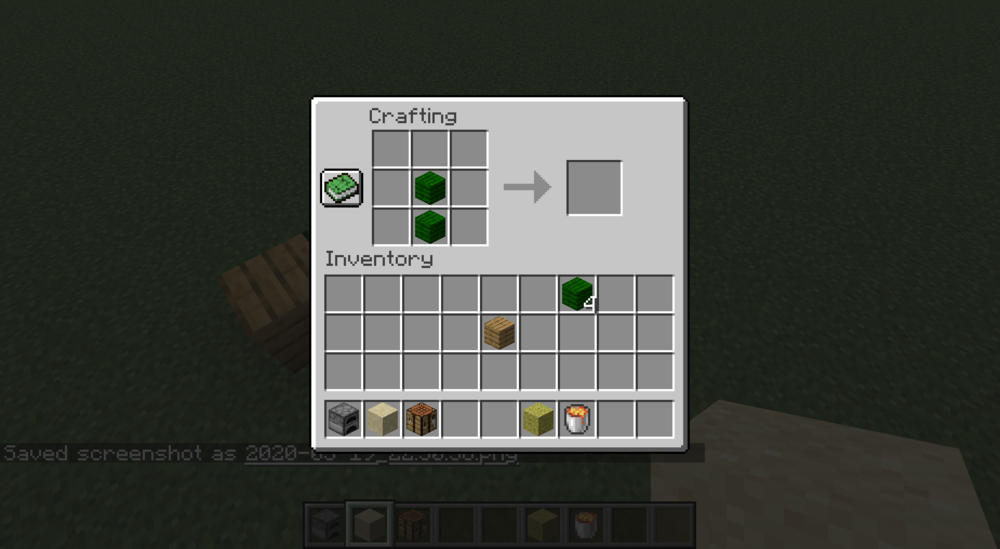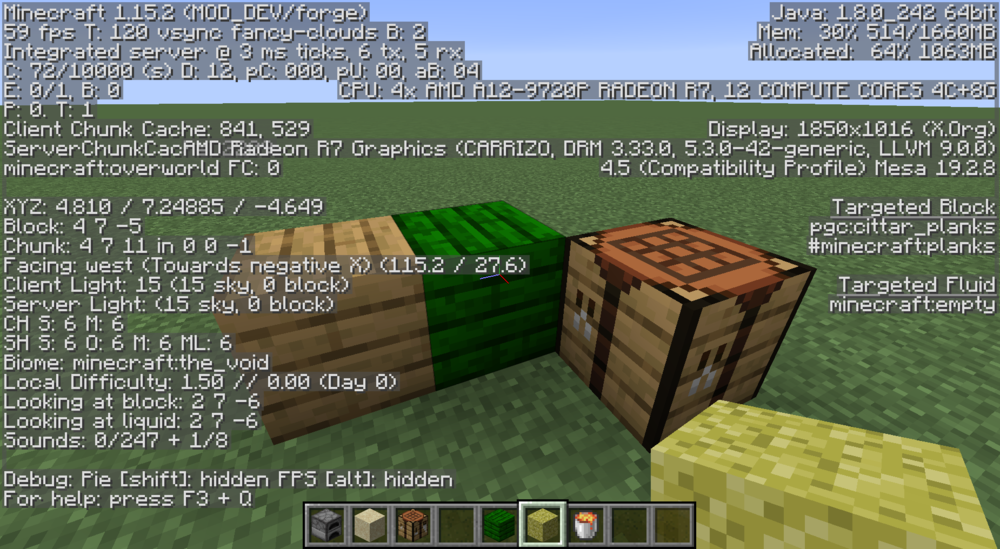-
1.15.2 Adding minecraft.planks tag for a block do not provide vanilla recipes.
I found what I was doing wrong. I added tags only to blocks not items. I should have placed the same .json files also in data.minecraft.tags.items. Now everything works fine.
-
Making first 1.15 entity, I would be eternally grateful for any help with errors
Use .addBox method instead. Example code: this.bipedBody = new ModelRenderer(this, 0, 1); this.bipedBody.addBox(0F, 0F, 0F, 11, 11, 11); this.bipedBody.setRotationPoint(-5F, -1F, -6F); If you are using Eclipse you can view vanilla Minecraft entity models implementation in "Project and External Dependencies/forge_1.15 (...) /net/minecraft/client/renderer/entity/model" It could be helpful.
-
1.15.2 Adding minecraft.planks tag for a block do not provide vanilla recipes.
I removed this unnecessary handler but it didn't help, unfortunately. Should I register block tags in some way besides putting appropriate .json files in data.minecraft.tags.blocks ? However, the #minecraft.planks tag is displayed in F3 mode. I don't register in forge objects here, but these functions only adds objects to ArrayLists in my class "PgcRegistry" and set their registry name, I register these objects later for example here.
-
1.15.2 Adding minecraft.planks tag for a block do not provide vanilla recipes.
I just placed planks.json in resources/data/minecraft/tags/blocks directory. https://github.com/SaturninUfolud/PGC
-
1.15.2 Adding minecraft.planks tag for a block do not provide vanilla recipes.
Adding tag minecraft.planks do not provide vanilla recipes (for example creating crafting table, chest or sticks). Similarly, tag minecraft.sand do not provide smelting recipe for a glass block. It works fine for example with minecraft.dragon_immune or enderman_holdable.
-
[1.14.4 / 1.15.2] Please make PotionBrewing.addMix public.
If method "PotionBrewing.addMix" is public, it will be much easier to add new potion brewing recipe.
-
Saturnin_UFOlud joined the community
-
[1.14.4] Allow entity to change dimension with other than vanilla teleporter.
I suggest adding method to Entity.class "public Entity changeDimension(int dimensionIn, net.minecraftforge.common.util.ITeleporter teleporter)", which allows teleport entity with custom Teleporter and interface "Iteleporter to "Teleporter.class" like it was done in "forge 1.12.2".
IPS spam blocked by CleanTalk.


